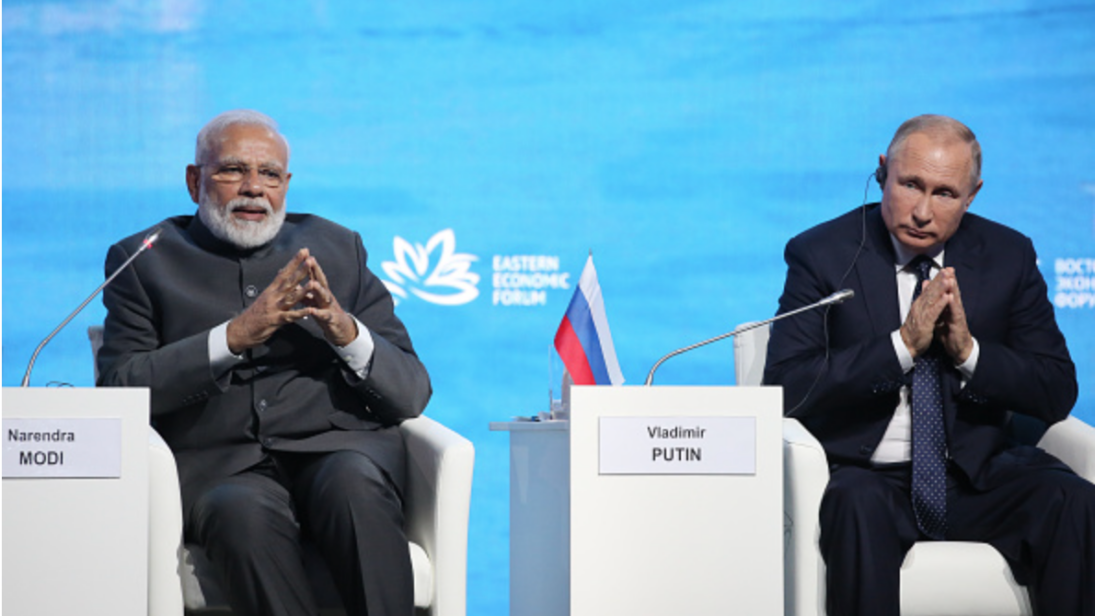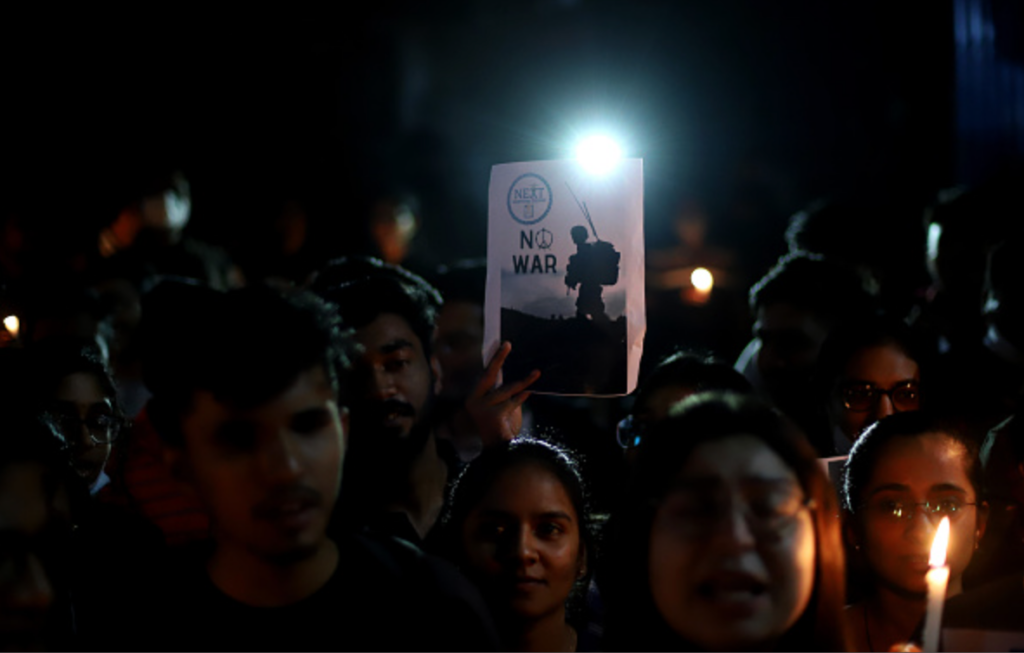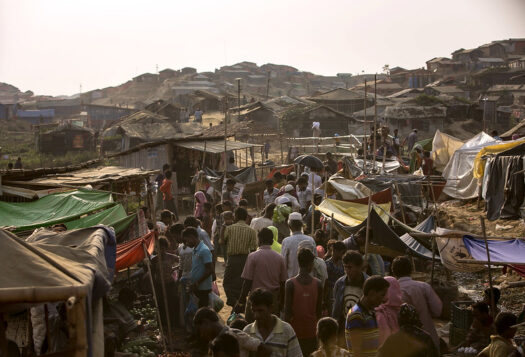
The ongoing crisis in Ukraine serves as a stark reminder of how a world increasingly defined by militarized geopolitical rivalries leaves no country unscathed. Defying strategic logic, Russia’s three front invasion of Ukraine has left several countries, including India, attempting a tightrope balancing act between opposing sides under the rubric of “non-alignment,” “strategic autonomy,” and, more recently, “multi-alignment.”
On Ukraine, India has held to its multi-aligned position by abstaining from a vote condemning Russia at the United Nations Security Council (UNSC) while also reiterating support for immediate cessation of all forms of violence in the country. In 2014, India adopted a similar stance when the United Nations discussed the crisis in Crimea, which also involved condemning Russian activities. Historically, in multilateral forums, New Delhi has refrained from strong criticism on questions concerning international security when it does not concern its immediate neighborhood and where partners involved fall on opposing sides. India’s diplomatic efforts in far-away Ukraine, until now, have largely been limited to vague comments reiterating “long term peace and stability in the region and beyond” and private talks between Prime Minister Modi and his counterparts in Russia and Ukraine, largely focused on evacuation of stranded Indian students. India has provided humanitarian assistance to Ukraine, but it has contributed little towards conflict de-escalation, which is an immediate priority given the lack of progress in bilateral talks between Kyiv and Moscow.
India’s “wait and see approach” may serve its immediate needs in retaining both Russia and the West as key bilateral partners, but this neither-here-nor-there strategy will be disastrous for its long-term foreign policy goals. New Delhi has yet to show how it will address the contradiction between professed neutrality and the decisiveness in defending international norms that would better enable it to play a leadership role on the global stage.
“Multi-Alignment” and New Delhi’s Great-Power Ambitions
India emerged as an independent nation in the midst of the Cold War and global decolonization: it adopted non-alignment as a largely defensive foreign policy, to protect its sovereignty and autonomy from encroaching U.S.-Soviet spheres of influence. The collapse of the Soviet Union and the resultant dissolution of bloc politics—together with India’s rapid economic growth—allowed New Delhi to pursue rapprochement with the United States and other major powers and emerge as a key “swing state.”
New Delhi has yet to show how it will address the contradiction between professed neutrality and the decisiveness in defending international norms that would better enable it to play a leadership role on the global stage.
Since May 2014, when Prime Minister Narendra Modi assumed office, the government has placed more emphasis on New Delhi’s great-power ambitions compared to its predecessor governments. Modi’s vision for India—expressed at least in rhetoric—is for the country to be a “leading” rather than “just a balancing” force. Minister of External Affairs Dr. S. Jaishankar has reiterated this sentiment. In fact, in BJP’s re-election campaign ahead of the 2019 general election, he and his party members went on to assert that Modi alone can make the country a “strong superpower.”
India’s aspirations to play a bigger and more influential role have found expression in its widening areas of interest and operation, yet it remains unclear how India seeks to follow-through on its ambitions with action. In material terms, specifically economic and military capability, India trails its rising-power counterparts. Even before the pandemic induced global economic slowdown, the Indian economy faced a slump, as poverty levels continued to rise and living conditions deteriorated. India has a strong military, but it lags in defense modernization and self-sufficiency. Although India ranked fourth in Lowy Institute’s latest Asia Power Index, it exerts “less influence in the region than expected” due to its “negative power gap” score, which deteriorated further in 2021, compared to previous years.
In doctrinal terms, New Delhi’s plan to increase its influence comes through “a parallel pursuit of multiple priorities, some of whom could be contradictory”—which essentially is an attempt to maximize its own interests, without compromising on core values. This provides an ideological justification to India’s current action of the Ukraine crisis. India’s official position is one of “neutrality” which it is presenting as imperative to ensure a diplomatic resolution to the ongoing conflict.
However, the key question emerging is whether a country that aspires to be a superpower can afford “neutrality” without appearing overly self-interested and selectively engaged globally. Russia’s activities in Ukraine do not affect Europe alone: they pose a serious threat to the global rules-based order, which India vocally supports. Viewing the Ukraine crisis as an “East-West” conflict, is not only a harmful interpretation of history, but precludes India from having a significant say in how a new world order will shape up. India has spent considerable diplomatic energy nurturing ties with the West over shared commitments to democracy; the United States sees Russia’s attack on Ukraine as a direct assault on democracy. So far, Washington has tolerated India’s position on Ukraine, reflecting how the United States has become more accommodating of New Delhi’s strategic interests. Yet Washington rightly expects New Delhi to do more. Even France—which espouses its own version of “strategic autonomy“—has indicated its desire for India to play a larger role in resolving the Ukraine crisis, given the influential position it holds.

From “neutrality” to engagement
India has a direct stake in a diplomatic resolution to the Ukraine crisis as the lives of around 20,000 of its own citizens (many of whom have been evacuated) are at risk. Indian students became targets of Ukrainian hostility following India’s abstention at the UNSC. The death of two Indian students in Ukraine—one of whom was killed due to Russian shelling—and heavy injury of another student caught in firing in Kyiv reveal how Indians are among the direct victims of Russian violence. But placated by Russian promises to investigate the deaths of Indian students, India has not only refrained from publicly criticizing Russian violence, but also abstained from voting on a critical UNHRC resolution which sought to establish an independent international commission of inquiry on violence in Ukraine. New Delhi’s justification for its position was that it was “in the best interests of the country.” However, by refusing to openly condemn violence, India’s stance comes across as a subtly pro-Moscow.
By refusing to openly condemn violence, India’s stance comes across as a subtly pro-Moscow.
Even if open condemnation of Russia is not a viable option for New-Delhi—stemming from unique constraints imposed on its “special” relationship with Moscow—playing “both sides” is an equally unviable option. India sees the current Ukraine crisis as having roots in post-Soviet politics and feels it is risky to squarely blame one side over the other for the origins of the crisis. However, its interpretation of the Cold-War roots of the dispute must not prevent New Delhi from publicly opposing the invasion. Unlike China, which is using the current Ukraine crisis to advance its own agenda and defame the West, India’s calculated position can become asset, though only if it plays a more active role in mediation.
New Delhi should look back at its own history of mediation during the Korean War—at which point it adhered firmly to non-alignment—for a blueprint on how to maximize the advantages of adopting an independent foreign policy. This policy may appear internally inconsistent: India abhors third-party intervention in its own “internal” dispute with Pakistan over Jammu and Kashmir. But by resorting to violence that has killed thousands of innocent Ukrainian civilians in an offensive invasion, Putin himself has internationalized a “territorial dispute.” As international strategic competition deepens, the Ukraine crisis is likely just the first India will need to navigate. New Delhi must reassess its foreign policy doctrine such that multi-alignment does not become a cover for self-interested, selective non-involvement.
***
Image 1: Bloomberg via Getty Images
Image 2: Anadolu Agency via Getty Images


